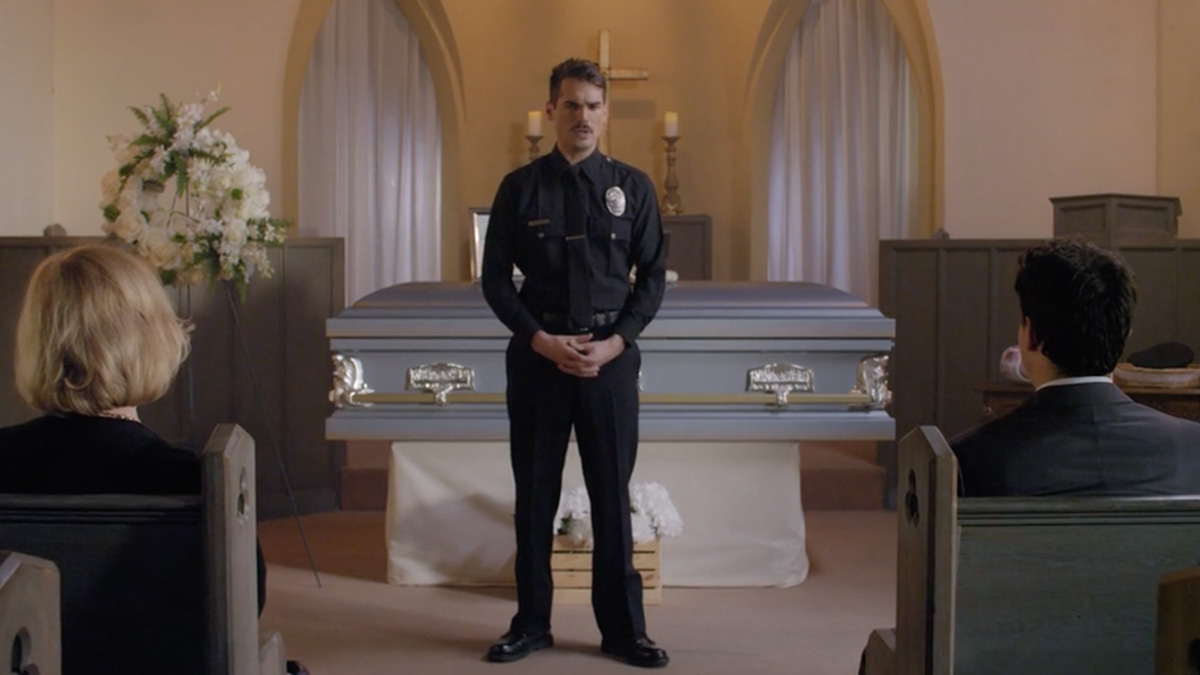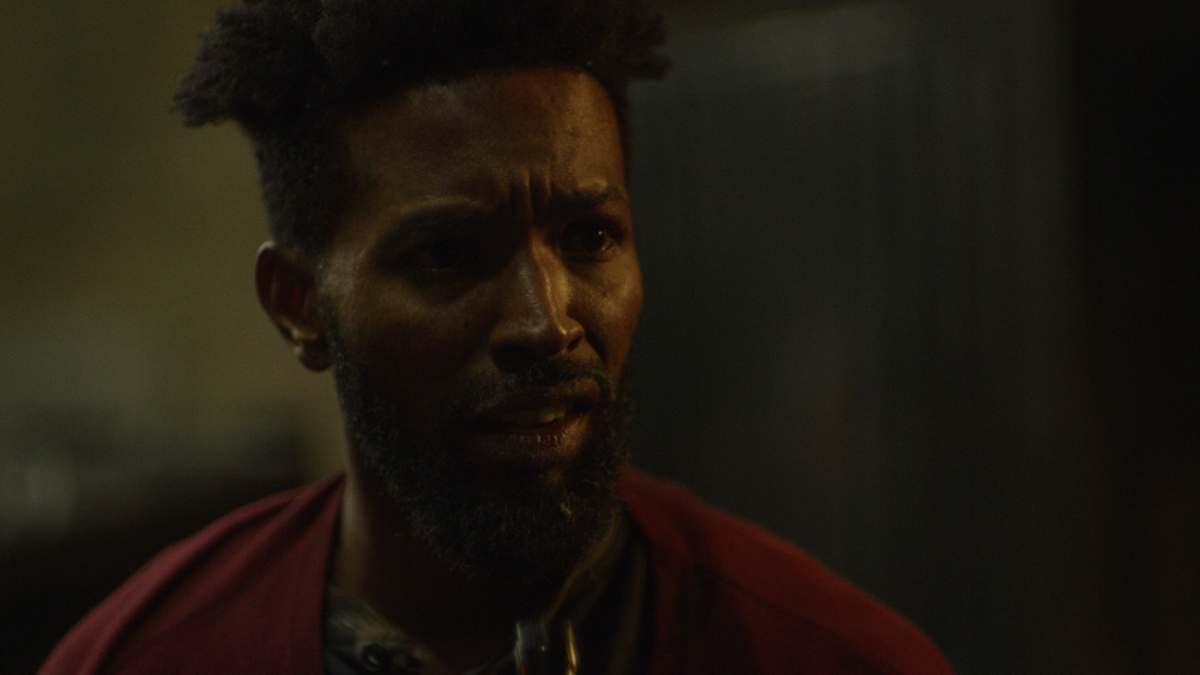Tempers flare during a jazz band’s rehearsal when Ray stumbles in typically late, only this time, there’s more to it than his usual lack of commitment.
Set in the early 1960s, Sunrise Meets Sunset shows how much jazz musicians felt about the disparity between on-stage and off-stage treatment. Directed by Aram Atkinson, this tense short film stems from a 70-page screenplay crafted for an 8 episode series. The short is a proof-of-concept created after the screenplay has garnered audience attention and won TV Pilot competitions. We spoke with Aram who told us more on the film, concept and production.
Can you tell us what inspired you to bring this story to life?
I started playing the sax when I was about 9 years old, and fell in love with jazz music straight away, especially the style from the 1950s and 60s. I used to have posters on the wall of musicians like Duke Ellington and Charlie Parker, and I naively assumed (as you do as a kid) that the whole world saw them the way I did. A few years ago though, I read a story about Miles Davis being beaten up and arrested outside his own gig by the police, and it opened my eyes to what life for the great jazz musicians of the 1960s must have been like when not on the stage, which I’d shamefully never really considered.
The full 70-page screenplay of Sunrise Meets Sunset also delves into the worlds of political espionage and some other aspects of the 1960s that have always fascinated me.
Is this just a scene from your 70 page script? Or did you modify the narrative to fit the short format?
This short is a scene taken from the full 70-page screenplay of Sunrise Meets Sunset, which won Filmarket Hub’s UK TV Pilot Contest last year! One of the prizes for winning was a live pitch to studios, and I knew right away I wanted to make a proof-of-concept for it.
With more time and logistical freedom, I’d have loved to have adapted this scene to give it a more definitive ending, but we only had 10 days to pull the production together, a day to shoot, and 2 days to edit, so it really was just a case of shooting the scene as is. In the full script, this scene is interrupted by the band’s manager who tells them of the new tour they have been invited to. I wanted to include that but because of covid we were limited to a maximum of 10 people in total on set (cast and crew), and we were already maxed out sadly.
With all that said though, I am still super proud of the scene as it is, and hopefully if and when the pilot is picked up, people will get to see what I really have planned for Ray, Nile, Louis, and Charlie as they tour across Europe at the crux of the cold war.
As a writer/director are you open to changes or suggestions when you start shooting or do you like to stick to what has been written?
Filmmaking can be such an unknown beast that being adaptable is a necessity. I always like to hear what’s written first and make sure I have one in the bank for the edit, but I am also totally open to an actor’s suggestion if they think their line can be delivered in a better way, especially if it can be reduced to save that screentime as well (forever the practical filmmaker)!
All the cast were great, and Durassie Kiangangu who plays Ray, and Sanchez Brown who plays Nile, both came to their key roles with some really strong ideas and research. It’s made me want to go into a project with actors at an earlier stage of the script and workshop ideas in a rehearsal space first to build something from the ground up with a cast.
What has this film taught you about filmmaking?
Well number 1, never choose a double bass as a short film prop, that was an expensive nightmare!
This project was the first time the producer, Makenna Guyler, and I had worked together, and it’s hard to put into words how much stronger and more enjoyable the experience was for it. Something Makenna and I both wanted to prove was that short films can be made in a way that doesn’t require long hours and poor welfare, an experience many of us have endured.
I know in the past I have both been pushed to do long hours, and also asked too much of other people for my own projects, so this time, we really wanted to run a production that was welfare and people led. End result, it was the best production experience I have ever had, and it showed what’s possible when you have a core team/partnership who value people over product!
What are your favorite short films?
It’s hard to keep up with the amount of great short films being made, so no doubt there are hundreds I am overlooking, but just to rattle some off; my longstanding favourites are The Division of Gravity by Rob Chiu, The Sandman by Diego Contreras, Yes, God, Yes by Karen Maine, and Jim Cummings’s Thunder Road and It’s Alright, It’s Ok.
Most recently I really enjoyed Dawn in the Dark by Runyararo Mapfumo, and in March I got to see A Letter to Black Men by Kiosa Sukami and Shear by Riyadh Haque at Manchester Film Festival, both amazing films. Riyadh is a close friend I’ve watched grown from strength to strength, and we were both involved in each other’s project in some small way, so it’s been incredible to see his film get the accolades it deserves.
Which films you can say directly inspired this film?
We actually used photos from the 1960s as our main reference for the short, looking at stills of Max Roach, Miles Davis, and other jazz artists of the era, but my main two references for the full pilot screenplay have always been Utopia (the 2013 TV series) and Whiplash by Damien Chazelle.
Both Utopia and Whiplash create incredible tension in scenes that involve very few people, and they both are stylistically beautiful with their cinematography and colour, and Oli Brotherhood did an amazing job of channelling those references as Director of Photography, as did Adam Mears from No.8 London in the grade.
The White Lotus was also a big inspiration for the soundtrack; we wanted to infuse that repetitive quality it has with some more traditional jazz instruments, and Thom Robson (the composer) absolutely nailed it.




